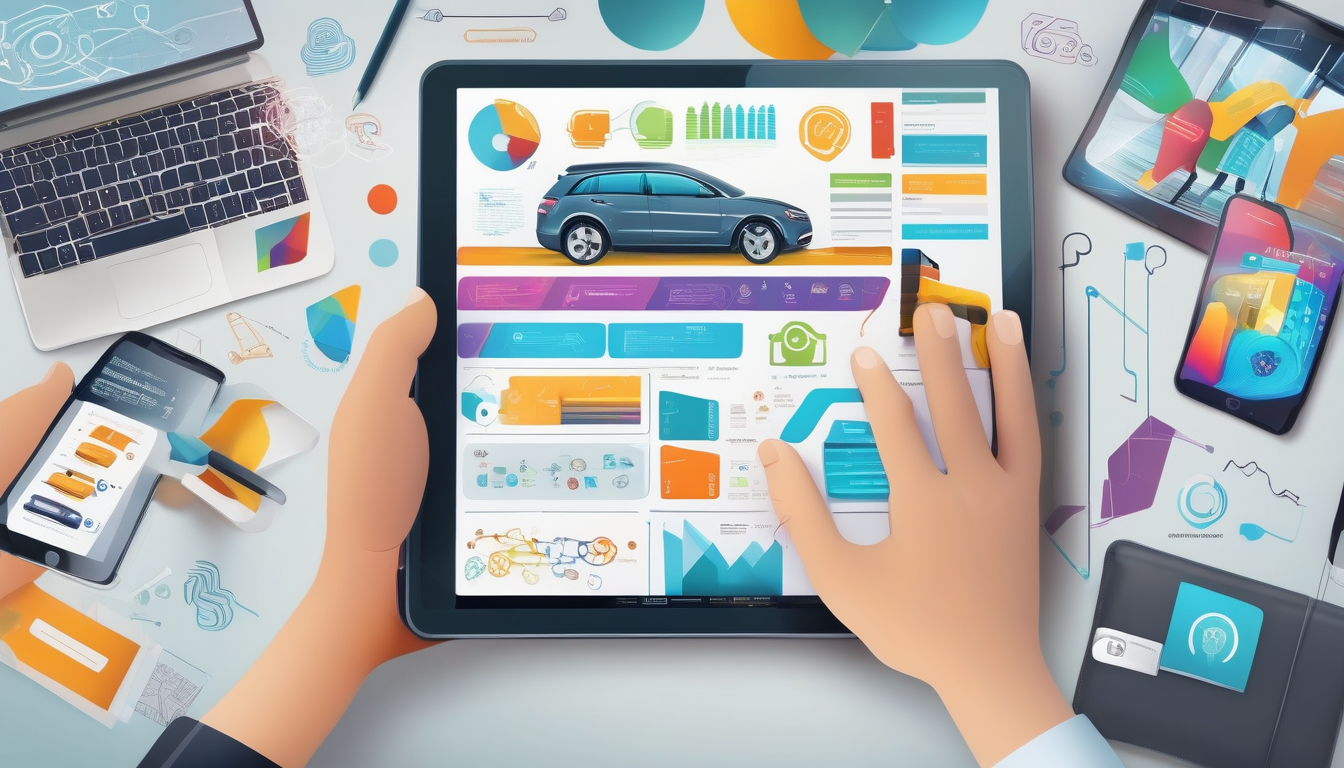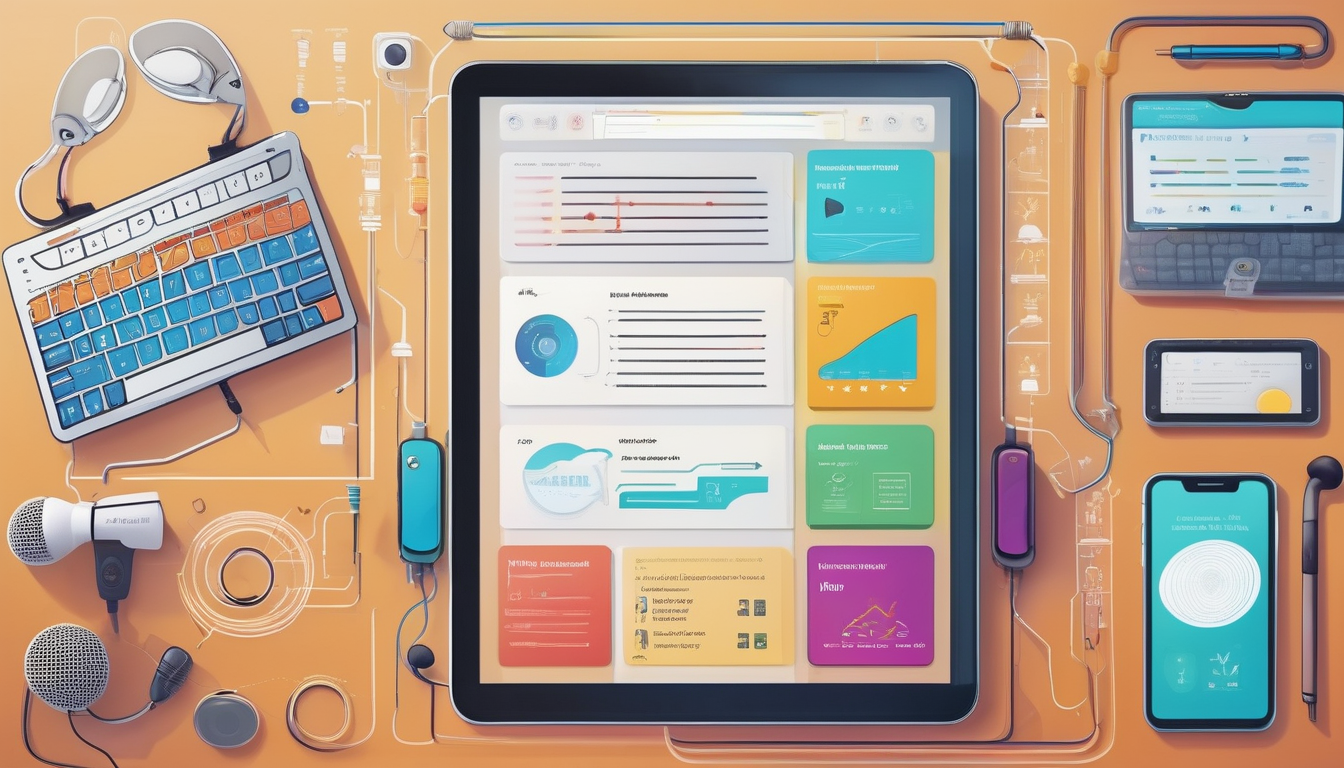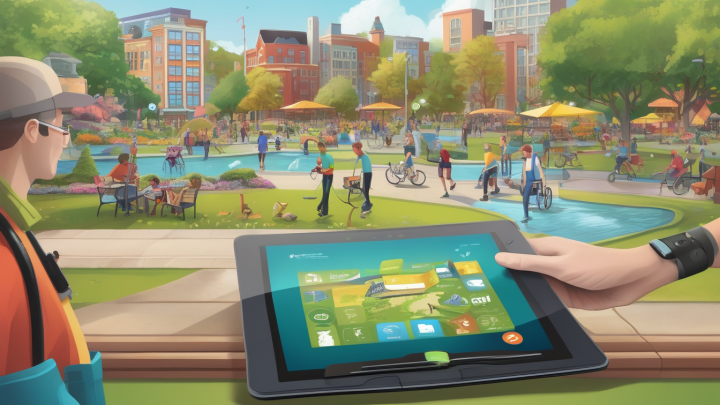Artificial intelligence (AI) is not just a buzzword; it’s a game changer, especially for individuals with disabilities. Imagine a world where technology adapts to your needs, making everyday tasks easier and more enjoyable. This is not a distant dream; it’s happening right now! AI is paving the way for innovative solutions that significantly improve the quality of life for those who face accessibility challenges.
Accessibility is crucial for everyone, yet many people with disabilities encounter barriers that can make daily life frustrating and isolating. From mobility impairments to visual and hearing challenges, the hurdles are diverse and often overwhelming. The good news? Technology, particularly AI, is stepping up to the plate to address these issues head-on. By understanding the unique challenges faced by individuals with disabilities, we can harness the power of AI to create solutions that empower rather than hinder.
For instance, AI-powered assistive technologies are revolutionizing how people interact with their environments. Think about speech recognition systems that allow someone with mobility impairments to control their smart home devices with just their voice. Or consider computer vision tools that help visually impaired individuals navigate unfamiliar spaces with confidence. These innovations are not just enhancing accessibility; they are transforming lives!
As we delve deeper into this topic, we will explore various AI-driven technologies that are making a significant impact. From speech recognition systems that facilitate communication to computer vision innovations that promote independence, the possibilities are endless. We will also discuss how natural language processing is creating more inclusive communication tools, ensuring that everyone can interact with technology seamlessly.
In conclusion, AI is not merely enhancing accessibility; it is redefining what it means to live with a disability in today’s world. By continuing to innovate and implement these technologies, we can create a future where everyone, regardless of their abilities, can thrive. So, let’s embrace this change and work towards a more inclusive society!

Understanding Accessibility Challenges
Accessibility is a fundamental right, yet it remains a significant hurdle for many individuals with disabilities. These challenges are not just physical barriers; they encompass a wide range of issues that affect daily life. Imagine trying to navigate a world that isn’t designed for you—this is the reality for many people. The lack of accessible infrastructure, technology, and information can lead to feelings of isolation and frustration.
One of the most pressing challenges is the inaccessibility of public spaces. Many buildings lack ramps, elevators, or even clear signage, making it difficult for individuals with mobility impairments to participate fully in society. For those with visual impairments, the absence of tactile guidance or audio signals can make navigating public transport a daunting task. Moreover, the digital divide exacerbates these issues, as many websites and applications are not designed with accessibility in mind.
Consider the following key challenges:
- Communication Barriers: Many people with hearing impairments struggle to access information that is primarily delivered through audio.
- Social Isolation: Individuals with disabilities often face social exclusion, which can lead to mental health issues.
- Technological Limitations: Not all assistive technologies are user-friendly or affordable, limiting access to those who need them most.
Addressing these challenges requires a multi-faceted approach. It’s not just about compliance with regulations; it’s about creating an inclusive environment where everyone can thrive. Innovative technologies, especially those powered by AI, are stepping in to bridge these gaps. By understanding the unique challenges faced by individuals with disabilities, we can work towards solutions that enhance their quality of life and promote independence.

AI-Powered Assistive Technologies
Artificial Intelligence (AI) is revolutionizing the way we think about accessibility for individuals with disabilities. The integration of AI into assistive technologies is not just a trend; it’s a game-changer. Imagine a world where technology adapts to your needs, making life easier and more enjoyable. This is what AI-powered assistive technologies are all about. They are designed to enhance user experience and provide solutions that were once thought impossible.
From speech recognition to computer vision, AI is paving the way for innovative tools that cater to various disabilities. For example, speech recognition systems allow individuals with mobility impairments to control devices through voice commands. This technology is not only about convenience; it’s about empowerment. It enables users to engage with their surroundings in ways that were previously limited.
AI-powered assistive technologies are making waves in everyday life. Consider smart home systems that respond to voice commands, allowing users to control lights, thermostats, and security systems effortlessly. Virtual assistants, like Siri or Alexa, are also stepping up to provide tailored support, answering questions, and performing tasks based on the user’s needs.
Furthermore, the potential of these technologies is vast. As AI continues to evolve, we can expect even more sophisticated applications that enhance accessibility. For instance, imagine a future where AI can predict a user’s needs based on their habits and preferences, offering proactive assistance before they even ask for it!
In summary, AI-powered assistive technologies are not just enhancing accessibility; they are transforming lives. By breaking down barriers and fostering independence, these innovations are creating a more inclusive world. The journey has just begun, and the possibilities are endless.
Speech Recognition Systems
Imagine a world where individuals with mobility impairments can effortlessly interact with their devices, breaking free from the constraints that once held them back. powered by artificial intelligence are making this dream a reality. By converting spoken language into text, these systems allow users to control their devices using just their voice, making technology more accessible than ever.
These systems are not just about convenience; they represent a significant leap forward in accessibility. For many, traditional input methods like keyboards and touchscreens can be challenging or even impossible to use. With AI-driven speech recognition, users can perform a variety of tasks, such as:
- Sending messages and making phone calls
- Controlling smart home devices
- Accessing information online
Consider the impact of this technology in everyday life. For example, a person with limited mobility can command their smart home system to adjust the thermostat or turn on lights without needing to physically reach for switches. This newfound independence is not just about ease; it’s about empowerment. It allows users to engage with their environment in ways that were previously unimaginable.
Looking ahead, the future of speech recognition technology is bright. As AI continues to evolve, we can expect advancements that will enhance accuracy and expand the range of commands recognized by these systems. Imagine a time when voice recognition can understand nuanced emotions or dialects, making interactions feel even more natural. This potential for growth is what excites both developers and users alike, as it promises to create an even more inclusive technological landscape.
Applications in Everyday Life
Imagine waking up in a world where technology understands you, where your voice can command your surroundings, and where your daily tasks become a breeze. Speech recognition technology has made this dream a reality for many individuals with disabilities. From smart home systems to virtual assistants, AI is revolutionizing how we interact with our environment.
For instance, consider how smart home devices can be controlled by simple voice commands. Individuals with mobility impairments can easily adjust their home lighting, thermostat, or even security systems without needing to physically reach for a switch. This level of independence is not just a convenience; it significantly enhances their quality of life.
Furthermore, virtual assistants like Amazon’s Alexa or Google Assistant provide real-time information and support. These systems can help users manage their schedules, set reminders, or even make phone calls, all through voice commands. The ability to communicate with technology in such an intuitive way removes barriers that many face daily.
Moreover, in the realm of communication, tools like speech-to-text applications allow individuals who are deaf or hard of hearing to engage in conversations seamlessly. By converting spoken words into text, these applications foster inclusivity and ensure everyone can participate in discussions, whether in person or virtually.
As we look ahead, the potential applications of AI in everyday life are boundless. With ongoing advancements, we can expect to see even more sophisticated tools that not only cater to the needs of individuals with disabilities but also promote a more inclusive society. The future is bright, and it’s exciting to think about how AI will continue to break down barriers and enhance accessibility for all.
Future Developments
As we look ahead, the future of AI in enhancing accessibility for individuals with disabilities is nothing short of exciting. Innovations are on the horizon that promise to revolutionize how we interact with technology, making it more inclusive than ever before. Imagine a world where communication barriers are virtually non-existent, thanks to advanced AI systems that understand and respond to our needs in real-time.
One significant area of development is in speech recognition technology. Future systems are expected to become even more intuitive, learning from user interactions to provide a highly personalized experience. This means that individuals with mobility impairments will be able to control their environments effortlessly, using only their voice. The integration of machine learning will allow these systems to adapt to different accents, speech patterns, and even emotional tones, making communication smoother and more effective.
Moreover, the role of computer vision is set to expand dramatically. Future innovations may include wearable devices that not only assist visually impaired individuals in navigation but also recognize faces and objects, providing contextual information. This could empower users to engage more confidently in social settings, fostering a sense of independence that many have longed for.
Natural Language Processing (NLP) is also anticipated to evolve, leading to more sophisticated chatbots and virtual assistants. These tools will not only provide information but will also engage in meaningful conversations, understanding user intent better than ever. This can be particularly beneficial for individuals with cognitive disabilities, as they will have access to support that is tailored to their specific needs.
In summary, the future developments in AI technology hold the promise of creating a more accessible world for everyone. By breaking down barriers and enhancing communication, these advancements will not only improve the quality of life for individuals with disabilities but also foster a more inclusive society as a whole. The journey ahead is filled with potential, and we can’t wait to see where it leads!
Computer Vision Innovations
Computer vision is not just a buzzword; it’s a game-changer for individuals with visual impairments. Imagine walking down a busy street, and instead of feeling lost or overwhelmed, you have a smart device that can recognize obstacles and guide you around them. This is the power of that are transforming the lives of many. These technologies utilize advanced algorithms to interpret visual data, making it easier for visually impaired individuals to navigate their environments with confidence.
One of the most exciting applications of computer vision is in navigation aids. Devices equipped with computer vision can analyze their surroundings and provide real-time feedback. For example, a wearable device can alert users to nearby objects, helping them avoid potential hazards. This not only fosters independence but also boosts the confidence of users as they navigate through different settings.
Another remarkable innovation is the development of object recognition systems. These systems can identify everyday items, such as food products or personal belongings, and relay this information to the user through audio or haptic feedback. Imagine being able to pick up a can of soup and instantly knowing its contents or finding your keys without having to rummage through drawers. This technology is revolutionizing how individuals interact with the world around them.
Furthermore, the integration of computer vision with other technologies, such as augmented reality (AR), is opening up new horizons. AR can overlay helpful information onto the user’s field of vision, providing context about their surroundings. For instance, a visually impaired person could wear AR glasses that describe their environment, pointing out important landmarks or even reading signs aloud. This fusion of technology not only enhances accessibility but also enriches the user experience.
As we look to the future, the potential for computer vision innovations is immense. With ongoing advancements in machine learning and artificial intelligence, we can expect even more sophisticated solutions that will continue to break down barriers for individuals with disabilities. The question is, how will we harness this technology to create a more inclusive world?

Natural Language Processing in Accessibility
Natural Language Processing (NLP) is a game-changer when it comes to making technology more accessible for everyone, especially for individuals with disabilities. Imagine a world where computers understand what you say just like a human would. That’s the magic of NLP! It allows for seamless communication between users and machines, breaking down barriers that have long hindered accessibility. By transforming spoken or written language into a format that machines can understand, NLP opens up a treasure trove of opportunities for those who face communication challenges.
Consider how NLP-powered tools can enhance the daily lives of people with disabilities. For instance, voice recognition software can convert speech into text, making it easier for individuals with hearing impairments to participate in conversations. Moreover, NLP can be used to develop chatbots and virtual assistants that offer support in real-time, catering to a wide range of user needs. These tools not only provide essential information but also foster a sense of independence and confidence among users.
One of the most significant applications of NLP in accessibility is in the realm of text-to-speech technology. This feature is particularly vital for individuals with visual impairments or reading disabilities. By converting written text into spoken words, text-to-speech applications enable users to access a wealth of information that would otherwise be out of reach. Whether it’s reading an article, navigating a website, or accessing educational materials, the ability to hear content read aloud transforms the way individuals interact with the world.
Furthermore, as NLP continues to evolve, we can expect even more innovative solutions to emerge. The future holds promise for advancements in language translation, sentiment analysis, and personalized communication tools that will make technology even more inclusive. In a nutshell, NLP is not just a technological marvel; it’s a bridge to a more accessible world, ensuring that everyone, regardless of their abilities, can communicate and engage with technology effectively.
Text-to-Speech Applications
Text-to-speech (TTS) technology has become a game-changer for individuals with visual impairments or reading disabilities. Imagine being able to access a world of information simply by listening. This technology transforms written text into spoken words, allowing users to consume content in a way that suits their needs. Whether it’s reading a book, browsing the internet, or even accessing important documents, TTS applications have made it possible for many to engage with text in a more meaningful way.
One of the most exciting aspects of TTS is its versatility. It can be integrated into various platforms and devices, making it accessible to users in different environments. For instance, smartphones, tablets, and computers all have TTS capabilities built-in or available through apps. This means that whether you’re at home, in school, or on the go, you can have text read aloud to you, enhancing your ability to stay informed and connected.
Moreover, TTS technology is not just about convenience; it plays a crucial role in fostering independence. For many individuals, being able to listen to emails, articles, or even social media posts means they can navigate the digital world without relying on others. This independence is empowering and can significantly improve their quality of life.
In addition to personal use, TTS applications have found their way into educational settings. Schools are increasingly adopting these tools to support students with learning disabilities. By providing auditory access to written materials, educators can create a more inclusive environment that accommodates diverse learning styles.
As we look to the future, the potential for TTS technology is immense. Innovations in voice quality, language support, and even emotional tone are on the horizon. These advancements promise to make interactions with technology even more natural and engaging. So, whether you’re a student, a professional, or just someone looking to enhance your reading experience, TTS applications are paving the way for a more accessible future.
Chatbots and Virtual Assistants
In today’s fast-paced world, are revolutionizing the way we interact with technology, especially for individuals with disabilities. Imagine having a personal assistant that is available 24/7, ready to help you navigate challenges and provide support at a moment’s notice. This is not just a dream—it’s a reality thanks to artificial intelligence!
Chatbots, powered by sophisticated AI algorithms, can engage in conversations, answer questions, and provide information tailored to individual needs. For those with hearing impairments, these chatbots can communicate through text, ensuring that no one is left out of the conversation. Similarly, virtual assistants like Siri and Alexa can be activated through simple voice commands, making it easier for individuals with mobility challenges to access information and control their environment.
One of the most exciting aspects of these technologies is their ability to learn and adapt. As users interact with chatbots and virtual assistants, these systems gather data to improve their responses and tailor their functionalities. This means that over time, they become more intuitive and efficient, significantly enhancing the user experience. For instance, a virtual assistant can remember your preferences, whether it’s your favorite music playlist or the best route to your workplace, making daily tasks smoother and less cumbersome.
Moreover, the integration of chatbots in various sectors, such as healthcare and customer service, has made a remarkable impact. Here’s how:
- Healthcare: Patients can receive immediate answers to their medical inquiries, schedule appointments, and even get reminders for medication.
- Customer Service: Chatbots provide instant support, helping users navigate services and solve problems without the need for human intervention.
As we look to the future, the potential for chatbots and virtual assistants to enhance accessibility is immense. With continuous advancements in AI, we can expect even more personalized and responsive solutions that cater to the diverse needs of individuals with disabilities. The journey towards inclusivity is gaining momentum, and these technologies are leading the charge!
Frequently Asked Questions
- What is AI’s role in enhancing accessibility for people with disabilities?
AI plays a crucial role by powering assistive technologies that improve communication, navigation, and overall interaction with the environment, making life easier and more independent for individuals with disabilities.
- How do speech recognition systems benefit individuals with mobility impairments?
Speech recognition systems enable those with mobility impairments to control devices and communicate hands-free, effectively breaking down barriers and fostering greater independence.
- Can you give examples of AI-powered assistive technologies?
Sure! Examples include speech recognition software, computer vision tools for navigation, text-to-speech applications, and AI-driven chatbots that provide real-time support and information.
- What advancements can we expect in the future for accessibility technologies?
Future advancements may include more sophisticated speech recognition that understands context better, improved computer vision for enhanced object recognition, and more intuitive natural language processing for seamless communication.
- How does natural language processing improve accessibility?
Natural language processing (NLP) enhances accessibility by enabling more inclusive communication tools, allowing users to interact with technology in a way that feels natural and intuitive, thus bridging the gap between humans and machines.
- What are the benefits of text-to-speech applications?
Text-to-speech applications provide access to written content for individuals with visual impairments or reading disabilities, making information more accessible and enhancing their ability to engage with various media.



